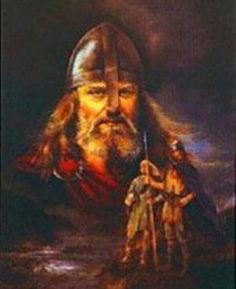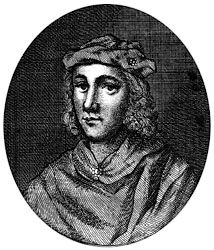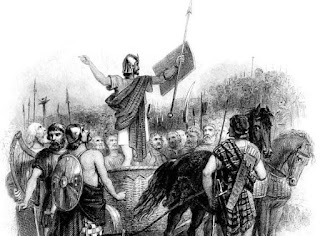William Wallace (Part 3 of 3)
WALLACE
Late in August 1299, he left Scotland on a diplomatic mission to Philip IV of France who, for political reasons, briefly imprisoned him, but who supplied a safe-conduct for our beloved William le Walois of Scotland, knight' on his onward journey to consult the Pope in Rome.
The goal-not surprisingly, given Wallace's views – was the restoration of King John.
Back in Scotland some two years later, his movements are uncertain but it is difficult to disbelieve that he was a spent force. There is some indication that, after Falkirk, Edward had offered his enemy the opportunity to enter into peace, but Wallace rejected him.
A compromise was not in his vocabulary. He was specifically excluded from the inevitability of Edward's kingship, and from then on was even more of a marked man.
There were several attempts to capture him, all of which he eluded, but he was eventually taken by Sir John Menteith on August 3, 1305, traditionally at Robroyston on the outskirts of Glasgow.
Immediately transported south, he faced trial at Westminster Hall. The process of law was as heartless and severe as warfare at that time – no jury, plea, witnesses, or defence – but the victim would have had no other expectation.
The indictment – which, together with the processing of the inevitable sentence would seal the legend of Wallace forever-accused him of slaughter, arson, atrocities against the English Church and the murder of Heselrig. He was deemed to be an outlaw who had refused royal clemency. He vehemently denied the charge of treason, since he had never entered into Edward's allegiance.
Treason comprised his rebellion, his acceptance of the Guardianship, his summoning of parliaments, his persuading the Scottish people to accept a treaty with France - though he was not involved in the negotiation of the Auld Alliance - and displaying his banners in the field against the English king.
The sentence was swiftly carried out. He was dragged at the tails of horses to Smithfield and there hanged. He was cut down while still alive to experience the ripping out of his innards. The head was removed from the body to adorn London Bridge, while the remainder was quartered - portions being sent for public display in Newcastle, Berwick, Perth and Stirling.
By demanding this ghastly death, Edward ensured that Wallace became immortal.











Comments
Post a Comment